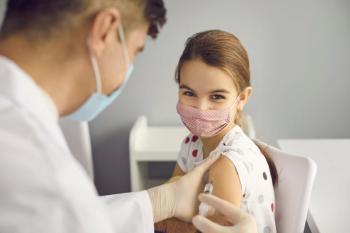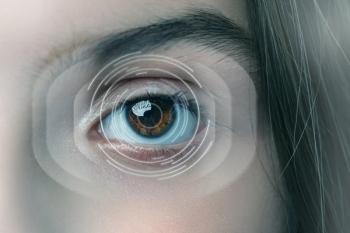
Medicated shampoos and scalp treatments: A three-decker sandwich
medicated shampoos
Medicated shampoos and scalp treatments: A three-decker sandwich
The Hamacher Resource Group provided the information for this article. The Milwaukee company provides marketing services and business intelligence to the healthcare industry. Wholesalers, manufacturers, and retailers partner with Hamacher Resource Group to improve their profitability. For more information, visit
Once almost exclusively made up of products to control dandruff or seborrhea, todays medicated shampoo sections now include pediculicides and hair growth treatments. These "combined" sections rely on a three-tier merchandising presentation, with each "layer" using a slightly different management strategy.
The upper crust
Hair growth. Items deserve eye-level placement when they can claim consumer convenience, impulse value, and profitability. High-ticket hair growth products, notably Rogaine and its equivalents, usually rate eye-level shelves. Although sales in the $108 million category are decliningprobably due to the success of the prescription drug Propeciadrugstores control 57% of sales.
Giving hair growth products maximum exposure is one of the merchandising goals for these items. Another goal is to keep inventory lean yet avoid out-of-stocks. The second strategy is a sound one: Margins are slim, and inventory is costly. According to Information Resources Inc. (IRI), the retail price for these products averages more than $30.50. Research by Hamacher Resource Group reveals that the categorys most popular itemRogaine For Men Extra Strength 2 x 2 oz.retails for about $49. This price earns retailers less than 2% above average wholesale price (AWP).
Pediculicides. Shampoos and rinses that kill lice also rate eye-level placement. Not long ago, these items were merchandised in the first aid treatment section, but research shows that most customers look for lice products in the shampoo aisle. Consequently, drug chains have moved pediculicides. This new placement meets the needs of consumersmost do not want to ask for help in finding these productsand boosts the shampoo departments sales and profits.
Shampoo prices average $3.40; margins for popular brands usually fall 10%-15% above AWP. Margins for pediculicides are considerably higher than those of the typical shampoo. Prices for Nix 2 x 2 oz. are $18 to $20, and Rid 4 oz. falls between $12 and $15. Margins on best-selling pediculicides are 20% to 25%.
Sales of pediculicides peak when children go back to school. Preschool and elementary-age children account for the majority of the estimated 10 million infestations each year. To optimize sales, adjust inventory levels to meet increased demand, and schedule promotions during this period. Drugstores control 54% of this $157 million category. Here are the top four pediculicide items, which produced about 33% of total drugstore sales.
Nix Treatment Rinse 2 x 2 oz.
Nix Treatment Rinse 2 oz.
Rid Pediculicide Shampoo 4 oz.
Rid Pediculicide Shampoo 2 oz.
Dandruff shampoos. Popular premium-priced products also rate eye-level placement. Nizoral A-D and Neutrogena T-Gel generate high profits and are regularly supported by promotions. In drugstores, Nizoral A-D 4 oz. ranks No. 1 among dandruff shampoos in units, dollars, and profitability. At a price of about $10, it produces a gross margin of approximately 10%. Neutrogena T-Gel 4.4 oz. sells for about $5, producing a gross margin of about 15%.
Middle tier
The next nine best-selling dandruff items belong to the Head & Shoulders brand.
Head & Shoulders Refresh 15.2oz
Head & Shoulders Normal 15.2oz
Head & Shoulders 2-in-1 Dry 15.2oz
Head & Shoulders Intensive Treatment 15.2oz
Head & Shoulders 2-in-1 Fine 15.2oz
Head & Shoulders Dry Scalp Reg 15.2oz
Head & Shoulders Fine/Oily 15.2oz
Head & Shoulders 2-in-1 Dry 6.8oz
Head & Shoulders Normal 6.8oz
Other solid middle-tier selections? Scalpicin, Sebutone, Sebulex, Selsun Blue, Denorex, and Zincon.
Base tier
Products such as Zetar, DHS, ZNP Bar, and P&S generate high margins and are strongly drugstore-oriented but have little impulse value. People buy them mostly because a doctor recommended them. Positioning them higher on the shelves probably wont improve their sales.
Outlook
Sales of hair growth products and pediculicides have been slowing, but they still contribute substantially to drugstores. Merchandise the category according to consumer demand and profit potential to reap the benefits of this drugstore-oriented category.
Some drugstores have added hair regrowth and pediculicide items to their medicated shampoo sections. This strategy makes sense because studies show that customers look in the shampoo section first for these products.
HAIR & SCALP TREATMENTS CATEGORY SUMMARY
24
HAIR & SCALP TREATMENTS NEW ITEMS
HAIR & SCALP TREATMENTS GROWTH NEVER OUT LIST
Use this Never Out list to monitor your in-stock condition. The items listed account for more than 50% of the dollar sales in the Hair & Scalp Treatments department. An out-of-stock on any of these items represents a significant loss of sales.
____ Head & Shoulders Shampoo Refresh Shampoo 15.2 oz.
____ Head & Shoulders Shampoo Normal 15.2 oz.
____ Head & Shoulders Shampoo 2-in-1 Dry 15.2 oz.
____ Head & Shoulders Shampoo Oily/Fine 6.8 oz.
____ Neutrogena T-Gel Shampoo 4.4 oz.
____ Nix Treatment Rinse 2 oz.
____ Rid Pediculicide Shampoo 2 oz.
____ Rogaine Men Extra Strength 2 oz.
____ Rogaine Men Extra Strength 2 x 2 oz.
____ Rogaine Men Extra Strength Starter Kit
____ Rogaine Men 2 oz
____ Rogaine Women 2 oz.
HAIR & SCALP TREATMENTS COMPETITIVE SHOP LIST
This list includes the most popular and price-sensitive SKUs in the Hair & Scalp Treatments department. Use it to check that your prices on these key items fall within the average everyday retail range.
Sandra Levy. Medicated shampoos and scalp treatments: A three-decker sandwich.
Drug Topics
2002;9.
Newsletter
Pharmacy practice is always changing. Stay ahead of the curve with the Drug Topics newsletter and get the latest drug information, industry trends, and patient care tips.

















































































































